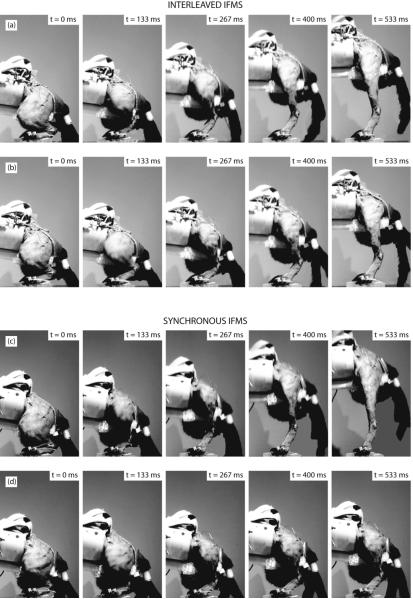Figure 6.
Interleaved IFMS produced sit-to-stand transitions that were slower to fatigue than behaviors produced by synchronous IFMS. Frames (a) and (c): the first episodes in two fatiguing sequences evoked with interleaved and synchronous IFMS, respectively. Frames (b) and (d): the fifteenth episode in these sequences evoked with interleaved and synchronous IFMS. Stimuli for initial episodes were successfully adjusted to produce stances with approximately equal amplitudes and kinematics. By the fifteenth episode, interleaved IFMS manifested little fatigue, but synchronous IFMS manifested substantial fatigue. Frames show the left (activated) leg in the foreground, and the right leg and tail in the background. Also shown are the connectors and lead-wire ribbon cables on the animal's back, and the end of the rotating trough from which the animal's hind limbs were suspended.

